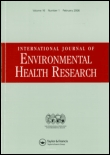
INTERNATIONAL JOURNAL OF ENVIRONMENTAL HEALTH RESEARCH
Scope & Guideline
Fostering Insights for a Sustainable Future
Introduction
Aims and Scopes
- Environmental Exposure Assessment:
Research focusing on assessing and quantifying exposure to various environmental pollutants, including air, water, soil, and food contaminants. - Epidemiological Studies:
Studies that investigate the links between environmental factors and health outcomes, employing various epidemiological methods to establish correlations and causative relationships. - Toxicological Research:
Investigations into the biochemical and physiological effects of environmental toxins and pollutants on human health and ecosystems. - Public Health Interventions:
Research evaluating the effectiveness of interventions aimed at reducing environmental health risks and improving community health outcomes. - Policy Analysis and Recommendations:
Studies that analyze environmental health policies and provide recommendations for improving public health frameworks and regulations. - Sustainable Practices:
Research exploring sustainable environmental practices and their impacts on health, including studies on waste management, pollution control, and conservation efforts.
Trending and Emerging
- Climate Change and Health:
Research exploring the impacts of climate change on human health is on the rise, addressing how environmental changes affect disease patterns, mental health, and public health systems. - Multifactorial Health Assessments:
There is growing interest in studies that assess the combined effects of multiple environmental factors on health outcomes, utilizing advanced statistical and modeling approaches. - Microplastics and Health:
Emerging concerns regarding microplastics and their health implications are becoming a focal point of research, driven by increasing awareness of environmental pollution. - Mental Health and Environmental Factors:
Research linking environmental conditions, such as urban green spaces and pollution, with mental health outcomes is gaining traction, reflecting a holistic view of health. - Innovative Interventions and Technologies:
Studies evaluating the effectiveness of innovative technologies and interventions for mitigating environmental health risks are trending, including the use of mobile health applications and community-based programs. - Sociodemographic Influences on Health Outcomes:
Research increasingly examines how sociodemographic factors intersect with environmental exposures to influence health outcomes, highlighting the importance of equity in public health.
Declining or Waning
- Traditional Toxicology:
Research specifically focused on traditional toxicological assessments has seen a decline, possibly due to the increasing emphasis on integrated approaches that consider environmental and social determinants of health. - Single Pollutant Studies:
Studies that examine the health impacts of individual pollutants without considering their interactions with other environmental factors are becoming less common, as interdisciplinary approaches gain traction. - Localized Environmental Health Concerns:
Research addressing localized environmental health issues, such as specific geographic health problems, appears to be diminishing in favor of broader, global health perspectives and meta-analyses. - Historical Exposure Studies:
Investigations focused solely on historical exposure assessments are declining, as researchers increasingly prioritize current and predictive assessments of environmental health risks.
Similar Journals

Environmental Health and Preventive Medicine
Shaping policies for a healthier tomorrow.Environmental Health and Preventive Medicine is a leading, peer-reviewed journal published by the Japanese Society for Hygiene, dedicated to advancing the field of environmental health and preventive medicine. With an impressive Impact Factor and ranking within the top quintile (Q1) in both Medicine (miscellaneous) and Public Health, Environmental and Occupational Health categories, this journal is recognized for its high-quality research and significant contributions to public health discussions globally. Established in 1996 and transitioning to an Open Access model since 2008, it provides unrestricted access to important findings that serve a diverse audience, including researchers, practitioners, and students. The journal's scope encompasses a wide range of topics essential for understanding environmental health issues and formulating effective preventive strategies, making it an invaluable resource for anyone engaged in health policy, environmental science, or community health initiatives. With an active readership and impactful research, Environmental Health and Preventive Medicine continues to influence the future direction of public health and environmental policies.

Environnement Risques & Sante
Navigating the Complexities of Environmental SafetyEnvironnement Risques & Sante is a prominent journal focused on the intersection of environmental issues, public health, and safety, offering a platform for scholarly discourse on the critical challenges posed by environmental risks to human health. Published by JOHN LIBBEY EUROTEXT LTD, this journal aims to disseminate impactful research that enhances our understanding of toxicology, mutagenesis, and their implications for public health policy and practices. Though it ceased coverage in Scopus in 2021, its historical contributions remain relevant, addressing urgent topics in environmental science and occupational health. Researchers and professionals engaged in these fields will find valuable insights and findings that inform practice and promote sustainable solutions. For interested readers, further exploration of the journal can provide essential knowledge in coping with contemporary environmental health challenges.
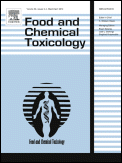
FOOD AND CHEMICAL TOXICOLOGY
Pioneering insights into the interplay of food and chemicals.FOOD AND CHEMICAL TOXICOLOGY, published by Pergamon-Elsevier Science Ltd, is a prestigious journal with a significant impact in the fields of food science, medicine, and toxicology, reflecting its Q1 and Q2 quartile rankings in various categories as of 2023. Established in 1982, this journal continues to serve as an essential platform for disseminating high-quality research focused on the toxicological assessment of foods and chemicals, aiming to advance knowledge that affects public health and safety. With a pivotal role in integrating diverse disciplines, including pharmacology and agricultural sciences, the journal ranks impressively within the top percentiles—specifically 95th in Toxicology and 92nd in Food Science on the Scopus metrics. Though it operates on a traditional subscription model, the journal is committed to providing valuable insights and findings to researchers, professionals, and students across the globe, making it a vital resource in the ongoing discourse around food safety and environmental health. Its comprehensive scope underscores its importance in shaping evidence-based policies and practices.
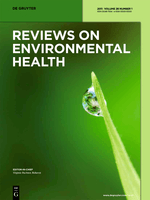
REVIEWS ON ENVIRONMENTAL HEALTH
Advancing knowledge at the crossroads of health and environment.REVIEWS ON ENVIRONMENTAL HEALTH, published by Walter de Gruyter GmbH, serves as a critical platform for interdisciplinary research in the field of environmental health. With a history dating back to 1974, this journal has established itself as a reputable source for scholarly articles that address pressing issues at the intersection of public health, pollution, and environmental sciences. The journal is ranked in the Q2 category across multiple domains, including Health (social science), Pollution, and Public Health, evidencing its impact within an increasingly vital discourse. Researchers and professionals will find REVIEWS ON ENVIRONMENTAL HEALTH particularly valuable as it contributes significant insights and fosters dialogue on environmental health challenges and solutions, all while enhancing its global accessibility. The journal maintains a robust presence on platforms like Scopus, ranking in the 90th percentile in social sciences and 86th in public health, further accentuating its importance in the academic community. With access to comprehensive reviews and original research articles, this journal not only enriches the current literature but also paves the way for innovative approaches to safeguarding environmental and public health.
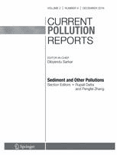
Current Pollution Reports
Innovating Environmental Research for a Cleaner FutureCurrent Pollution Reports, published by Springer Heidelberg, is an esteemed journal in the field of environmental science, focusing on the multifaceted aspects of pollution, waste management, and water science. With an impressive 2023 impact factor reflected in its status as a Q1 journal across multiple categories—including Management, Monitoring, Policy and Law, Pollution, Waste Management and Disposal, and Water Science and Technology—this journal stands at the forefront of environmental research and policy discourse. The journal, which has been in publication since 2015, aims to provide a platform for scholars and practitioners to share their findings, promoting the exchange of innovative ideas and effective solutions to pressing environmental challenges. With its rigorous peer-review process, Current Pollution Reports serves as an invaluable resource for researchers, professionals, and students committed to understanding and addressing pollution and its impacts on our planet.

Environmental Health
Advancing the Nexus of Environment and HealthEnvironmental Health is a premier, peer-reviewed journal dedicated to advancing knowledge in the interdisciplinary field of environmental health. Published by BMC since 2002, this Open Access journal aims to disseminate impactful research that addresses the critical intersections between environmental factors and public health. With its impressive stature as a Q1 journal in key categories, including Health, Toxicology and Mutagenesis, Medicine (miscellaneous), and Public Health, Environmental and Occupational Health, it ranks within the top tier of its field, boasting significant visibility and a high impact factor as demonstrated by Scopus rankings. Scholars and practitioners alike benefit from its well-rounded approach and commitment to bridging science and policy, making it essential reading for anyone invested in understanding and mitigating environmental health risks. The journal is based in the United Kingdom, with a focus on promoting global accessibility to its findings.

International Journal of Occupational Medicine and Environmental Health
Connecting research, practice, and policy for a healthier world.The International Journal of Occupational Medicine and Environmental Health is a distinguished journal dedicated to advancing the fields of occupational medicine and environmental health. Published by NOFER Institute of Occupational Medicine in Poland, this open-access journal has been providing a platform for innovative research since 2011. With an ISSN of 1232-1087 and an E-ISSN of 1896-494X, it allows for wide dissemination of findings that address contemporary challenges in public health, occupational settings, and environmental issues. The journal has established itself as a vital resource, achieving a Q3 ranking in both Medicine (miscellaneous) and Public Health, Environmental and Occupational Health categories as of 2023, reflecting its commitment to quality and relevance. With a Scopus rank of #295 out of 665 in its domain, it places in the 55th percentile, affirming its growing impact within the scientific community. Researchers, professionals, and students seeking to enhance their knowledge and contribute to the discourse will find the rich content and comprehensive studies presented in this journal invaluable. Explore cutting-edge research from 1994 to the present, and join the conversation on occupational and environmental health issues that profoundly affect global communities.

BULLETIN OF ENVIRONMENTAL CONTAMINATION AND TOXICOLOGY
Connecting science and policy for a sustainable future.BULLETIN OF ENVIRONMENTAL CONTAMINATION AND TOXICOLOGY, published by SPRINGER, is a pivotal journal in the fields of Environmental Science, Toxicology, and Public Health. With a strong history of dissemination since its inception in 1966, the journal predominantly focuses on the latest advances in understanding environmental contaminants and their toxicological effects on health and ecosystems. It currently holds a respectable Q2 ranking across multiple categories including Health, Toxicology and Mutagenesis, Medicine (miscellaneous), and Pollution, as per the 2023 metrics. While the journal is not Open Access, it provides an invaluable platform for researchers, professionals, and students seeking to contribute to and stay informed on critical issues regarding environmental hazards and their implications. With an engaged community of scholars and practitioners, this journal continues to be an essential resource for addressing the pressing challenges of environmental contamination and its health impacts, guiding future research and policy decisions.
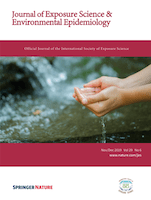
Journal of Exposure Science and Environmental Epidemiology
Pioneering Research at the Intersection of Health and EnvironmentJournal of Exposure Science and Environmental Epidemiology, published by SPRINGERNATURE in the United Kingdom, is a leading platform for researchers and practitioners dedicated to understanding the interplay between environmental factors and human health. With an impressive impact factor and Q1 and Q2 rankings across multiple categories such as Pollution and Public Health, the journal has established itself as a critical resource in the fields of epidemiology, toxicology, and environmental science. Covering a wide spectrum of studies from 2006 to 2024, it aims to disseminate timely research that empowers professionals and informs policy decisions. Although there is no open access option at this time, the journal's rigorous peer-review process ensures that only high-quality research is published, further cementing its reputation as a vital source of knowledge for advancing public health and environmental protection.

Environmental Epidemiology
Advancing knowledge at the intersection of environment and health.Environmental Epidemiology is a leading open-access journal published by Lippincott Williams & Wilkins, dedicated to advancing the field of environmental and public health research. Since its establishment in 2017, this journal has emerged as a vital platform for scholars and practitioners interested in the intricate relationships between environmental factors and health outcomes. With an impressive impact factor reflecting its rigorous peer-review process and a robust Scopus ranking—notably holding Q1 positions in categories such as Health, Toxicology and Mutagenesis, and Public Health—this journal is essential for those seeking to explore the latest findings and methodological advances in environmental epidemiology. Open access since 2018, it ensures wide dissemination of research findings, promoting accessibility and engagement among a global audience of researchers, policymakers, and students. As it continues to converge through 2024, Environmental Epidemiology remains committed to publishing high-quality articles that address pressing environmental health challenges, fostering interdisciplinary collaboration and knowledge sharing that is crucial for developing effective public health interventions.